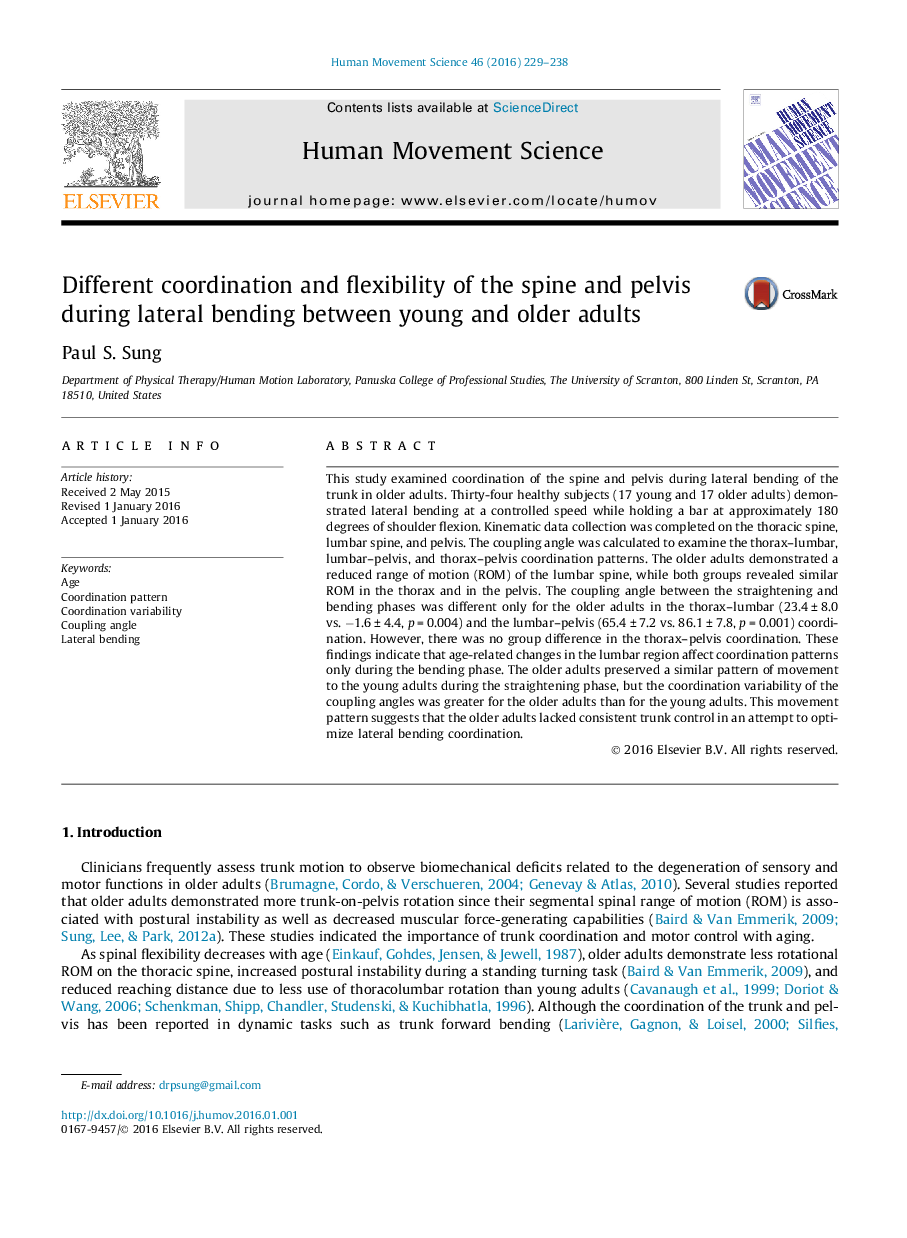| Article ID | Journal | Published Year | Pages | File Type |
|---|---|---|---|---|
| 928221 | Human Movement Science | 2016 | 10 Pages |
•The lumbar region affects coordination patterns with aging during the side bending.•There was no difference during returning phase from bending with aging.•The older adults lacked consistent trunk control in an attempt to optimize lateral bending coordination.
This study examined coordination of the spine and pelvis during lateral bending of the trunk in older adults. Thirty-four healthy subjects (17 young and 17 older adults) demonstrated lateral bending at a controlled speed while holding a bar at approximately 180 degrees of shoulder flexion. Kinematic data collection was completed on the thoracic spine, lumbar spine, and pelvis. The coupling angle was calculated to examine the thorax–lumbar, lumbar–pelvis, and thorax–pelvis coordination patterns. The older adults demonstrated a reduced range of motion (ROM) of the lumbar spine, while both groups revealed similar ROM in the thorax and in the pelvis. The coupling angle between the straightening and bending phases was different only for the older adults in the thorax–lumbar (23.4 ± 8.0 vs. −1.6 ± 4.4, p = 0.004) and the lumbar–pelvis (65.4 ± 7.2 vs. 86.1 ± 7.8, p = 0.001) coordination. However, there was no group difference in the thorax–pelvis coordination. These findings indicate that age-related changes in the lumbar region affect coordination patterns only during the bending phase. The older adults preserved a similar pattern of movement to the young adults during the straightening phase, but the coordination variability of the coupling angles was greater for the older adults than for the young adults. This movement pattern suggests that the older adults lacked consistent trunk control in an attempt to optimize lateral bending coordination.
